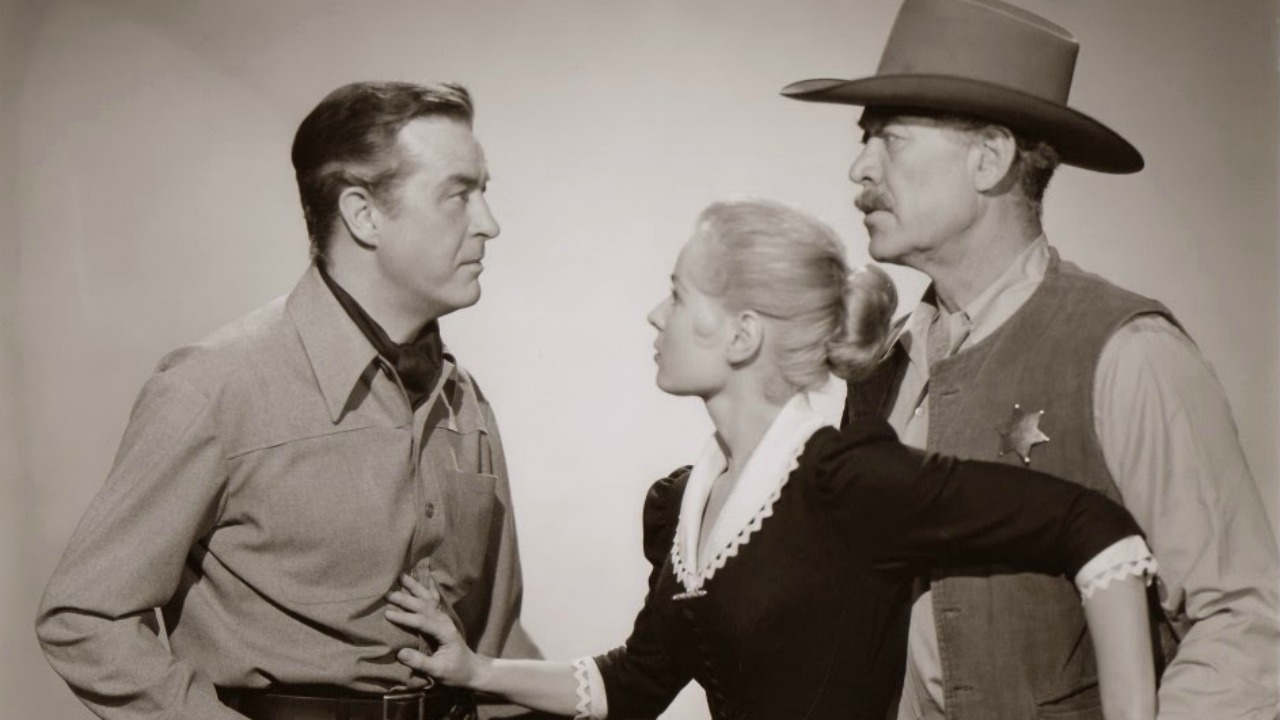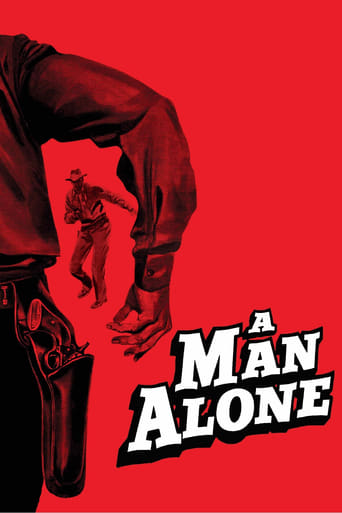



The greatest movie ever made..!
good film but with many flaws
I gave this film a 9 out of 10, because it was exactly what I expected it to be.
View MoreIt is encouraging that the film ends so strongly.Otherwise, it wouldn't have been a particularly memorable film
View MoreAfter Winning the Oscar for "Best Actor" for the Cutting Edge Film about Alcoholism, "The Lost Weekend" (1945), Ray Milland went on to have a Long and Varied Career in Film and Television.This B-Western made at "Republic" Studios (one of their last) was His first Try at Directing. He went on to Direct 3 other Movies, the Best is "Panic in the Year Zero" (1962), about the Aftermath of a Nuclear War.This is an Offbeat Western. The First 30 Minutes has Milland's Gunslinger on the Run in the Desert and there is No Dialog. This First Act Sets Up the Bleak Tone of the Film as there is much Suffering and Brutal Displays of the Harsh Desert and a Stage Coach Massacre (with a not often shot of a bloody murdered little girl). This is Adult Stuff.The Film has Noirish Claustrophobic Tendencies, Mob Mania, and Rich Folks as Super-Baddies. Almost Everyone in Town, it seems, has been Corrupted by the Harsh Realities of the Desert and the Clan of Outlaws Running Things.Ward Bond's Speech to His Daughter (Mary Murphy) about just how Bad Things were when She was a Little Girl and Lost Her Mother is Heartbreaking and Profound.Bond is accompanied by Lee Van Cleef and Raymond Burr and that gives this Western Shades of Film-Noir, as does the Desperation and Wholesale Corruption.Overall, Mary Murphy is Stunning as a Smart and Beautiful Young Woman, Van Cleef is Menacing, and Burr is Burly and Scary. Above Average Western in Color, but Not CinemaScope with a Good Cast, Good Story, and Milland's Direction is Edgy at times.
View MoreRay Milland directed a film himself for the first time with this, and not a bad effort too. He had a rather up and down career as an actor and continued in the same vein as director.Gunfighter Milland is lost and on foot in the desert, stumbles across a stagecoach with its occupants brutally murdered and as it transpired, robbed. He makes it to the nearest town, is shot at by a deputy sheriff who should really have stuck to driving trains, then witnesses and gets accused of a cold-blooded murder, goes on the run and holes up in a young lady's house whose sheriff father is quarantined with yellow fever. Should he stay or should he go? With Love potentially in the air you know the answer to that. So, now with plenty of time for moralistic asides and romance he tries lamely to clear his name. It's sound and simple fare expertly done and an engrossing oater which also manages to lightly analyse duty (or dooty as Ward Bond might say), justice, hypocrisy and redemption. Poor old Raymond Burr got saddled once again with the deranged baddies part. The Gun is usually the final judge and jury in these kind of Westerns, however not so here - and it ends like a TV episode of Bonanza with the suddenly contented people rolling by like clouds.Refreshingly any blurred lines that are introduced are not allowed; this film is straightforward in every department with all the generally accepted correct morality boxes ticked by the end and well worth watching because of that.
View MoreThis western opens with a man, later identified as gunslinger Wes Steele, riding through the Arizona desert; after his horse takes a tumble he is forced to shoot it and continue on foot. Eventually he comes across the site of a massacre; everybody aboard the stage, including a woman and child is dead. He unhitches the horses and rides one into the nearest town. The deputy sheriff pulls a gun on him and he shoots back injuring the man. Fleeing from the angry mob that emerges from the saloon he hides in the bank... here he hears the bank's owner, Stanley, arguing with his men; they were the ones that robbed the stage and one of them is upset about the deaths. They hear Steele moving about and use his presence as an excuse to shoot the dissenting gang member. Steele flees once again this time he takes shelter in a cellar. The next day he learns that he is in the house of the sheriff! The Sheriff is in bed with yellow fever but Steele is found by his daughter; if he is to survive the mob that is searching for him he will have to convince her of his innocence.This B Western has a decent story and is well acted; Ray Milland does a fine job, both as protagonist Wes Steele and as the film's director. Mary Murphy does a decent job as the Steele's love interest, the sheriff's daughter, Nadine Corrigan. Other notable performances come from Raymond Burr and Lee Van Cleef as Stanley and one of his henchmen. The opening scenes in the desert gave a real sense of how hot and dry it was making Steele's predicament seem real. This didn't let up when he got to town as most of the action took place in the sheriff's house creating a sense of claustrophobia. The film's strength is this claustrophobic atmosphere; in fact there is surprisingly little real action; just a few shootings and a fist fight but that isn't a fault to my mind. The are some faults of course; it is stretched credibility to believe that Steele would take shelter in the bank just as the real crooks were discussing the crime, then that he would hide in the house that just happened to belong to the sick sheriff... also he claimed that he was trying to get away from his reputation as a gunfighter but he kept telling people who he was! Still if you can ignore these faults it is a good way to pass the time if you like westerns.
View MoreThat's right, folks, perhaps the most Hitchcockian western ever made, this one. Right from the first frames, the eye is very keen: first a doll in the dust, then a peek inside the stagecoach and watching only from the knees to chest, the body of the little girl killed in a holdup. Then a very clean direction of Milland in this tale of a man falsely accused of murder and yes, On The Run. Saboteur in the West or any of the others he had the gun running from the mob etc. And finding the woman who believes him against the rest who are chasing him. The only difference here is that Milland is a gunman, whereas Hitch usually used the blank hero, flawless and innocent, chaste and chased. Otherwise he fits the bill.No western made was ever quite like this, more of a suspense film than rawhide. And very interesting. Too bad Milland was never interviewed about its peculiarities.
View More